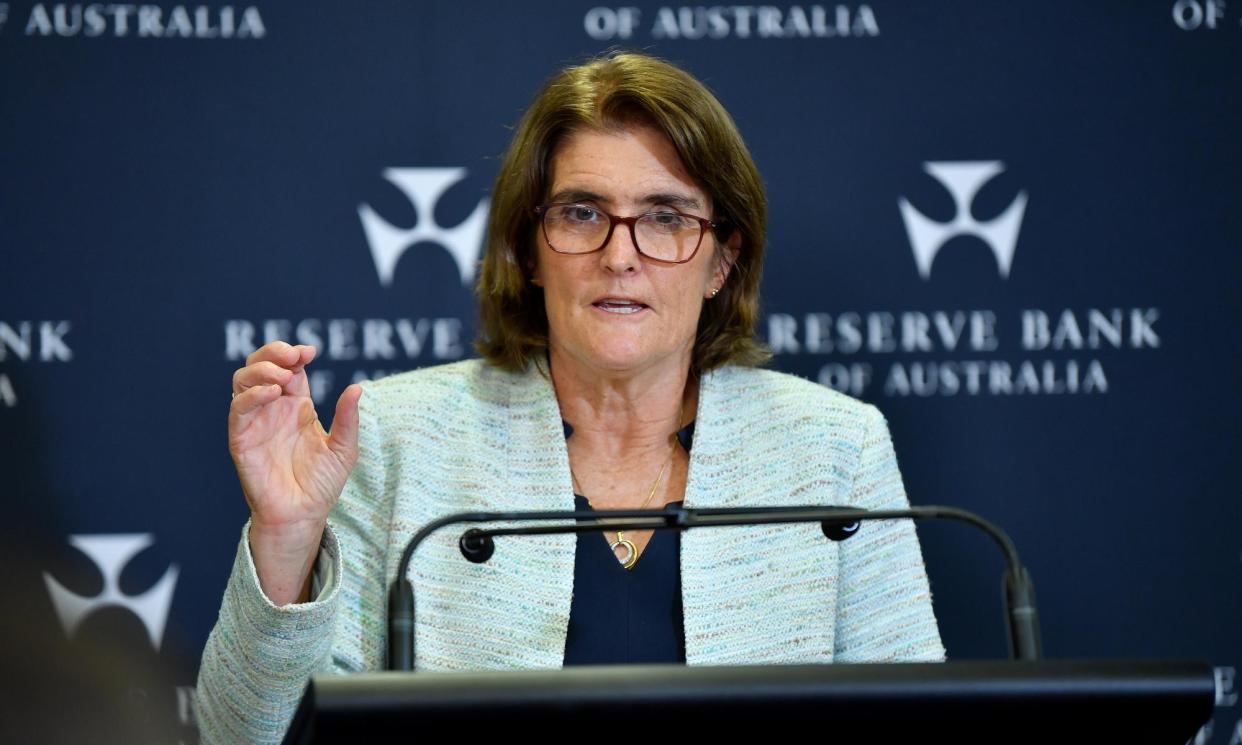Reserve Bank tipped to hold interest rate but economists split on when cuts will start

The Reserve Bank is widely tipped to leave its key interest rate on hold at this week’s board meeting, but economists are split on how soon borrowers can expect rate relief.
The central bank will announce the results of its second board meeting for 2024 on Tuesday. Pundits and investors alike anticipate the RBA will leave its cash rate unchanged at its 12-year high of 4.35%.
Official interest rates were relatively slow to increase in Australia and did not rise as high as similar economies. That flatter rate trajectory is one reason why the first cuts won’t land until next February, the independent economist Saul Eslake predicts.
Related: Interest rate rise unlikely after sluggish quarter of GDP growth, Australian economists say
“The RBA has consciously decided – though not explicitly said – that it’s willing to tolerate inflation being above its [2%-3%] target for longer than its peers,” Eslake said, listing counterparts such as the US Federal Reserve and the Bank of England.
That tolerance was aimed in part to “preserve as much as possible of the gains that have been made in reducing unemployment and underemployment in recent years”, he said. The corollary, though, was that Australia’s interest rates would also likely ease slower than elsewhere.
All of the big four commercial banks predict the RBA will start cutting this year. The CBA is the most aggressive, forecasting the equivalent of three 25 basis-point reductions by the end of 2024.
While Australia’s weak 0.2% economic growth in the December quarter was in line with the RBA’s expectations, consumer activity – the largest share of the economy – fell well short, said Gareth Aird, CBA’s head of Australian economics. Instead of expanding 1.1% from a year earlier, as the RBA forecast in November when it last hiked rates, consumption actually rose just 0.1%.
“A series of [interest rate] cuts will be required to prevent the unemployment rate from rising to the levels the RBA does not want to see it get to,” Aird said.
“So far the evidence indicates that the balance of risks for the RBA should be shifting to consumer spending surprising further to the downside rather than inflation proving more persistent,” he said. “Indeed the news on the inflation front is encouraging”, with the six-month annualised pace of price increases on track to be 3.2% for the current quarter – or just outside the target band.
The Reserve Bank governor, Michele Bullock, will detail the RBA’s thinking at a media briefing in Sydney an hour after the board’s rates decision is released at 2.30pm (AEDT). The bank is expected to leave rates on hold until the end of September when it will be cut to 4.1%, according to a poll of economists by Reuters.
Unions are among those calling for speedier cuts.
“Inflation is coming down in Australia and around the world,” the ACTU secretary, Sally McManus, said. “Unfortunately, the RBA has not understood the nonexistent role of wages in the current inflationary period and played little attention to contribution of price gouging by companies exploiting general price rises.
“They should not be looking to increase unemployment, their approach of the previous decade kept unemployment and underemployment higher than it should have been,” McManus said.
Eslake, though, said the RBA had to assess the impact of the amended stage-three tax cuts from 1 July, which would have the effect on household cashflow of lopping 50 basis points off interest rates. Other central banks did not have to consider such transfers in rate-cut calculations.
Aird said the CBA was “a little more dovish” on rates than the overall market. He predicted the RBA would have enough evidence by May to end its tightening stance towards rates. Two board meetings later, in August, the bias should have shifted to a loosening one.
“A key risk is the decision of the Fair Work Commission around the award and minimum wage,” he said. “If that outcome is too large it could pose a risk to the outlook for inflation and our expectations of an easing cycle.”


